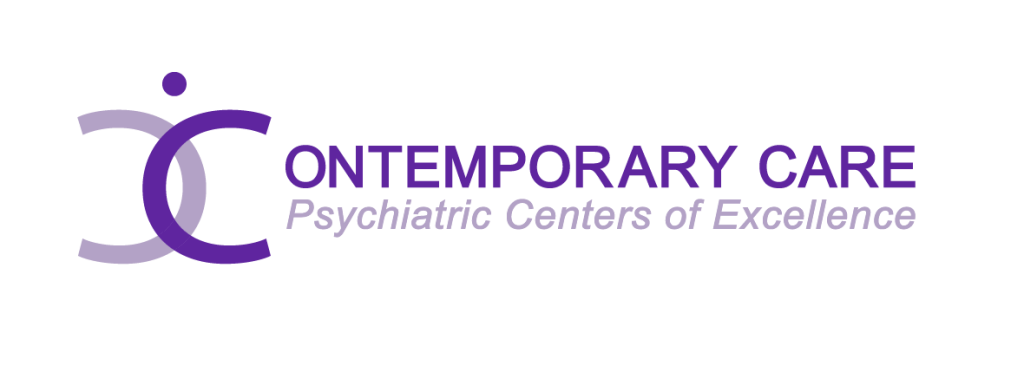As with anything related to mental health, the diagnosis of Borderline Personality Disorder (BPD) is never simple or clear-cut; rather, its path can often be long and uncertain. It’s crucial to make the distinction between self-diagnosis and seeking professional assessment. We will examine both approaches to a borderline personality disorder test. Whether you’re wondering about symptoms or considering a test for treating borderline personality disorder, this article will provide clarity and guidance.
What is Borderline Personality Disorder?
Understanding the Basics
Borderline Personality Disorder (BPD) is an emotionally distressing mental health condition that impedes one’s ability to regulate emotions, create healthy relationships, and form stable self-images. Intense emotional experiences, unstable relationships, and a high degree of instability in various aspects of life characterize this disorder. Borderline Personality Disorder (BPD), also known as Cluster B, can dramatically impact one’s mood, behaviour, and how one perceives themselves and others.
Core Characteristics of BPD
Emotional Instability
People with BPD experience profound emotional swings and may feel overwhelmed by their emotions. It can include:
- Rapid mood shifts from sadness to anger or anxiety.
- Persistent feelings of emptiness.
- Extreme reactions to perceived rejection or abandonment.
Impulsive Behaviors
Impulsivity is a hallmark of BPD, manifesting in several ways:
- Engaging in risky behaviours like reckless driving, unsafe sex, or substance abuse.
- Sudden initiatives that are poorly planned and may have negative consequences.
Turbulent Relationships
Relationships are particularly affected by BPD due to the intense emotions and reactions involved:
- Idealizing others intensely and suddenly devaluing them
- Fear of abandonment leads to frantic efforts to avoid being left alone
- Frequent conflicts and reconciliations within relationships
Self-Image Issues
Fluctuating Self-Identity
Individuals with BPD often experience significant uncertainty about who they are, which affects their life choices and values:
- Changing goals, values, and aspirations frequently
- Uncertainty about sexual orientation, career choices, and types of friends
Sensitivity to Criticism
Due to their fragile self-esteem, individuals with BPD may react intensely to criticism or perceived slights:
- Feeling devastated by criticism or failure
- Having severe reactions that can include self-harm or verbal outbursts
Fear of Abandonment
Real or Imagined Concerns
One of the most striking features of BPD is the intense fear of abandonment, whether real or imagined:
- Viewing temporary separations as permanent abandonment.
- Engaging in behaviors to avoid being left alone, such as clinging or impulsively ending relationships.
Risky Behaviors
Coping Mechanisms
To manage their intense emotions and fears, individuals with BPD might engage in harmful behaviors:
- Self-harm (cutting and burning) as a coping strategy to manage emotional pain.
It may contribute to suicidal thoughts and behavior, expressing deep despair and helplessness.
Treatment and Management
Professional Care Is Essential
While BPD is challenging, it is treatable with professional help:
- Dialectical Behavior Therapy (DBT) is particularly effective for teaching coping skills.
- Medication may also be prescribed to manage co-occurring conditions or symptoms like mood swings.
Awareness of and understanding BPD are crucial steps toward effective treatment and management.
Why Is Accurate Diagnosis Important?
The Need for Professional Insight
Accurate diagnosis is key in treating any mental health condition; especially complex ones like Borderline Personality Disorder (BPD). Here, we delve deeper into why professional insight is not just beneficial but essential.
Ensures the Right Treatment is Given
Tailored Treatment Approaches
Professional diagnosis is critical because it helps in:
Identifying the Specific Needs of the Patient: Each case of BPD can present differently, requiring a tailored approach to treatment.
Selecting Appropriate Therapies: Depending on the individual’s specific symptoms and needs, various therapies, such as dialectical behavior therapy (DBT), cognitive behavioral therapy (CBT), and medication, may be used.
Adjusting Treatments Over Time: As symptoms change or improve, treatments need to be adjusted accordingly, which requires ongoing professional evaluation.
Helps in Managing Symptoms Effectively
Strategic Symptom Management
Effective management of BPD symptoms is facilitated by professional diagnosis in several ways:
Understanding the Full Spectrum of Symptoms: Professionals can help identify all relevant symptoms, including those that might not be immediately apparent to the patient.
Preventing Escalation of Symptoms: Early and accurate diagnosis can lead to interventions that prevent symptoms from becoming more severe.
Educating the Patient and Family: Understanding the nature of the disorder can help manage everyday challenges and reduce conflicts within interpersonal relationships.
Prevents the Complications Associated with Misdiagnosis
Avoiding Negative Outcomes
The impact of a misdiagnosis can be significant, making professional insight invaluable:
Reduces the Risk of Inappropriate Treatment: Misdiagnosis can lead to treatments that are not only ineffective but potentially harmful.
Minimizes Psychological Impact: Incorrect diagnosis can exacerbate stress, anxiety, and depression in patients.
Economic Efficiency: Accurate diagnosis ensures that resources are well-spent on effective treatments.
Importance of Timely and Accurate Diagnosis
Optimizing Health Outcomes
As highlighted in medical literature, timely and accurate diagnosis is crucial for optimal health outcomes:
Best Opportunity for Positive Health Outcomes: A correct diagnosis early in the course of the disorder provides the best chance for effective management and positive outcomes.
Clinical Decision-Making: Accurate diagnosis informs better clinical decision-making tailored to the patient’s mental health conditions and problems.
The Role of Diagnostic Tools and Borderline Personality Disorder Test
Utilizing Standardized Methods
Professional assessments often involve a variety of tools and a borderline personality disorder test, which are essential for confirming a diagnosis of BPD:
Structured Interviews: These are used to assess symptoms and their impact on functioning systematically.
Psychological Testing: The test for borderline personality disorder like the MMPI-2 can help clarify the diagnosis by providing detailed information about borderline personality disorder, structure, and psychopathology.
The journey toward managing Borderline Personality Disorder begins with an accurate diagnosis. Healthcare professionals play an essential role in making sure the diagnosis of borderline personality disorder is correct, which is necessary for effective treatment and management. Their insight helps tailor effective therapies, avoid misdiagnosis risks and ultimately provide better health outcomes and quality-of-life benefits to their patients.
Self-Diagnosis: Pros and Cons
Self-assessment can be helpful when considering whether they might have Borderline Personality Disorder (BPD). Let’s investigate further into its pros and cons.
Pros of Self-Diagnosis
Advantages of Initial Self-Assessment
Self-diagnosis has its benefits, particularly in the early stages of seeking understanding about one’s own other mental health conditions:
Quick and Accessible:
- Immediate access to online resources and tests.
- There is no need to wait for appointments or referrals.
Helps in Early Self-Recognition of Symptoms:
- Increases awareness of mental health issues.
- Encourages proactive behavior towards seeking help.
- Allows individuals to identify patterns in their thoughts and behaviors that align with BPD characteristics.
Cons of Self-Diagnosis
Potential Pitfalls of Diagnosing Oneself
Despite its accessibility, self-diagnosis comes with significant risks that can affect overall mental health management:
Risk of Misdiagnosis:
- BPD symptoms often overlap with other mental health disorders, including Bipolar Disorder or Post Traumatic Stress Disorder, leading to inaccurate self-assessments.
Personal bias or lack of objective perspectives might result in either overestimation or underestimation of symptoms.
Lack of Professional Evaluation:
- Missing out on expert insights that only trained professionals can offer.
- Incorrect self-treatment: Misdiagnosis can lead to adopting inappropriate or harmful coping strategies or treatments.
Self-diagnosis may provide an important first step toward better mental health awareness; however, its limitations require professional assessment for complete solutions. Easy access to information allows early identification of symptoms which is important as an initial step, yet seeking professional assistance rather than doing it on one’s own will mitigate misdiagnoses or incorrect treatments and ensure effective medical advice is sought instead of replacement solutions.
Professional Assessment: The Gold Standard
When it comes to diagnosing Borderline Personality Disorder (BPD), professional assessment remains the most reliable and effective method. Here’s why trusting the experts is crucial for anyone suspecting they might have BPD.
Use of Validated Diagnostic Tool
Ensuring Accurate Diagnosis
Professionals use a range of scientifically validated tools to diagnose BPD accurately:
Structured Clinical Interviews: These are comprehensive assessments that cover a wide range of symptoms to ensure all aspects of the disorder are evaluated.
Standardized Screening Tools: Instruments like the McLean Screening Instrument for BPD (MSI-BPD) help identify symptoms indicative of BPD and ensure a thorough assessment.
Comprehensive Assessment Including Co-occurring Disorders
Holistic Approach to Diagnosis
A professional diagnosis of BPD often includes the identification of co-occurring disorders, which is crucial for developing an effective treatment plan:
Identifying Multiple Disorders: Conditions such as depression, anxiety disorders, or substance abuse often co-exist with BPD and need to be treated alongside BPD.
Differentiating from Similar Disorders: BPD symptoms can overlap with other personality disorders. Professionals are trained to distinguish a BPD diagnosis from similar conditions like Bipolar Disorder or PTSD, ensuring the treatment plan is appropriate.
Providing Appropriate Treatment Referrals
Connecting Patients with the Right Resources
Once a diagnosis is confirmed, professionals can guide patients towards the most effective treatments:
Referrals to Specialized Therapies: Depending on the individual’s needs, therapists might recommend specific types of therapy, such as Dialectical Behavior Therapy (DBT) or Cognitive Behavioral Therapy (CBT).
Medication Management: If needed, psychiatrists may prescribe medications to manage specific symptoms or co-occurring mental disorders.
Importance of Professional Insight
Expertise Matters
The expertise of mental health professionals is invaluable in diagnosing and treating BPD:
Years of Training and Experience: Professionals bring years of specialized training and clinical experience to the diagnosis process, which is crucial for handling complex cases of BPD.
Ongoing Support and Monitoring: Mental health professionals provide not just initial diagnosis but ongoing support and adjustments to the treatment plan as needed.
Professional assessment tests for borderline personality disorder are crucial in accurately diagnosing and effectively treating Borderline Personality Disorder. By employing validated diagnostic tools, considering co-occurring disorders and providing treatment referrals as needed, mental health professionals ensure individuals get comprehensive care that addresses all their needs. Trusting these experts is essential for anyone seeking clarity and support in managing BPD.
Common Tools for Borderline Personality Disorder Test
Professional Tests and Assessments
Several tools are commonly used in the professional assessment of BPD:
Diagnostic Interview: Structured conversations that explore symptoms.
Personality Tests: A standardized test for borderline personality disorder like the MMPI-2.
Observational Methods: Clinician observations during sessions.
The Role of an Online Borderline Personality Disorder Test
A Preliminary Tool
Online tests can serve as a preliminary check, but remember:
- They are not definitive.
- It should not replace professional diagnosis.
- It can sometimes offer insight into whether you should seek professional help.
When to Seek a Professional Borderline Personality Disorder Test
Identifying the Right Time
You might consider seeking a professional assessment test for borderline personality disorder test if:
- Symptoms persist and significantly impact your life.
- Self-help and coping strategies are insufficient.
- Your mental health is deteriorating despite your efforts.
The Process of Professional Diagnosis
What to Expect During Assessment?
Understanding what happens during a professional diagnosis can ease anxiety about seeking help:
Initial Consultation: Discussing symptoms and medical history.
Psychological Evaluation: In-depth interviews and possibly a borderline personality disorder test.
Discussion of Findings: Feedback and diagnosis from the professional.
Treatment Options Post-Diagnosis
Pathways to Management
Once diagnosed, several treatment options can be considered:
Therapy: Such as Dialectical Behavioral Therapy (DBT) or Cognitive Behavioral Therapy (CBT).
Medication: To manage specific symptoms or co-occurring issues.
Support Groups: Peer support and shared experiences.
Self-Help Strategies Alongside Professional Advice
Supporting Your Journey
While professional help is irreplaceable, incorporating self-help strategies is beneficial:
- Mindfulness and stress management techniques.
- Regular physical activity and healthy eating.
- Journaling or creative outlets for emotional expression.
Navigating Your Path to Wellness
Deciding between self-diagnosis and seeking a professional for a borderline personality disorder test can be daunting. Self-assessment tools may provide useful insight, but should never replace professional evaluation. If you suspect yourself or a loved one might have Borderline Personality Disorder (BPD), seeking professional evaluation is your most effective course. This self-test was created based on criteria from both the McLean Screening Instrument for Borderline Personality Disorder (MSI-BPD) and DSM-5 guidelines to give a precise diagnosis as well as access to treatments and strategies for effectively managing BPD. Your mental health journey is unique, and professional guidance is key to navigating this path successfully.

Take the First Step Towards Healing with Contemporary Care Centers
When struggling with symptoms of Borderline Personality Disorder or any other mental health conditions, seeking professional mental health help is an integral step toward recovery. At Contemporary Care Centers, our licensed mental health providers specialize in tailored psychiatric treatments tailored specifically for each client and utilize compassionate yet comprehensive treatment techniques and treatments tailored specifically for them. Reach out now to make an appointment and start on the journey towards healing and well-being – let Contemporary Care Centers show you the way towards living a more satisfying, satisfying life!



